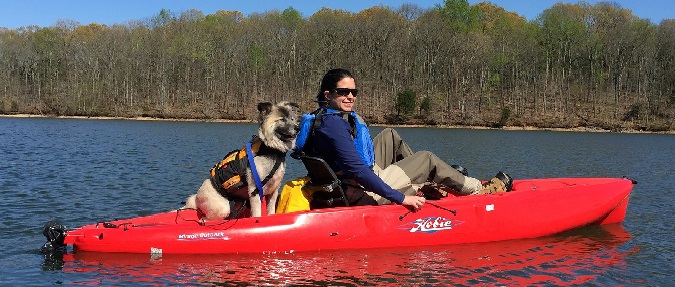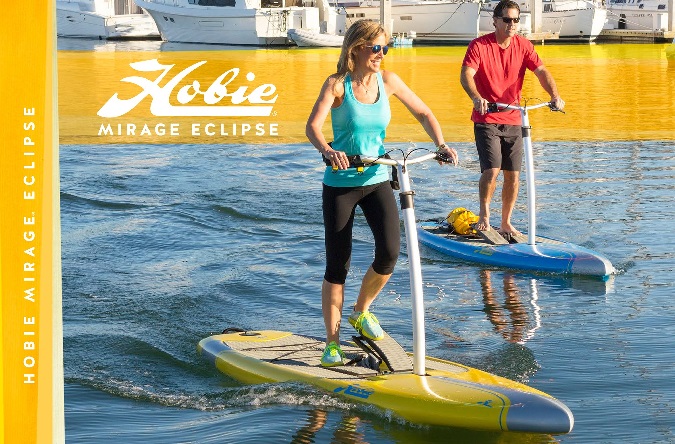“Honey, I’ve been thinking about expanding our family.” My husband immediately assumed a worried expression. As newlyweds, we had been enjoying a two-person household and its accompanying scheduling and financial liberties. “Oh…you have?”

“When can we get a dog?”
His face relaxed immediately. “Can we get a water dog that we can take on the lake?”
Philip and I knew we wanted a dog before we got married, but since we never do things by half measures, we adopted two dogs from a close friend. We already take them on daily walks and hikes, but once summer hits, we plan to spend every possible opportunity on the water. To that end, we’ve been introducing our dogs to the water and our kayaks.
Some dogs take to kayaks and watersports almost instantly, but more gradual exposure has worked well for us. So without further ado, let’s learn how to train your Hobie pedal pooch!
Step 1: You need a dog (or two)
This one should go without saying, so allow me to introduce our two fur children and littermates, Leo and Orion. Their breed is anyone’s guess, but we tell everyone that they are Keeshond/Collie mixes.
Name: Leo (Left)
Hobbies: Chasing squeaky toys, mooching treats, and going on walks
Name: Orion (Right)
Hobbies: Chasing his brother, cuddling his humans, and hogging the couch
Orion has always been more outgoing and is quite skilled at squeezing under a hand or arm when he wants to cuddle. Leo started out more timid but quickly came out of his shell once he discovered squeaky toys. They both love people, get along well with other dogs, and love spending time outside, which are ideal traits for any good pedal pooch.
Step 2: Ensure that your dog likes the water, or introduce the concept of water slowly
Orion and Leo grew up on a horse farm with a pond, so we already knew that they enjoyed swimming. However, a lake is major upgrade from a pond, so we started slowly by walking them on leashes to the shoreline. They had no problem with wading in the shallows, and Leo enjoys attacking the chasing the waves on a windy day.
Step 3: Match your kayak with the size of your dog
When I decided to purchase a Hobie kayak last year, I knew that Philip and I wanted at least one medium-sized dog and prioritized stability, storage space, and weight capacity when testing the various MirageDrive models. I currently own a Hobie MirageDrive Outback and use it for leisurely kayaking, photography, and fishing. The MirageDrive Outback also offers a large space for a dog to ride behind the Vantage CT Seat by removing the bungee cords.
Step 4: Refresh basic obedience
We adopted Orion and Leo right before Christmas, and neither of us favored the idea of winter kayaking. However, we began preparing in advance for kayaking season by working on basic obedience. Most dog owners already consider the sit, stay, and come commands as standard protocol, but it’s even more important when you want your dog to sit quietly in a moving kayak without a leash. Which leads us to the next point:
Step 5: Safety first!
As a park ranger, Philip teaches boating camps and leads canoe tours during the summer, and he always stresses safety with life jackets. In keeping with that mission, we also procured life jackets for Orion and Leo.
We know our dogs can swim, but the life jackets give us peace of mind in case they lose their balance or jump into the water voluntarily. We won’t have to worry about them getting tired or struggling to stay afloat until we can retrieve them, and they can also serve as four-legged ambassadors to park visitors about the importance of drowning prevention.
In the next installment of How To Train Your Pedal Pooch, we’ll go from land to water and begin introducing the dogs to the marina and a moving kayak.
Now if you’ll excuse me, I need to walk my dogs.
by , Hobie Team



